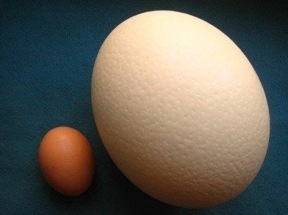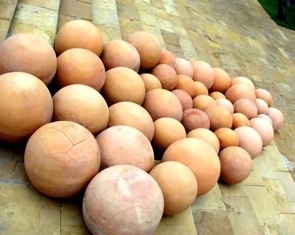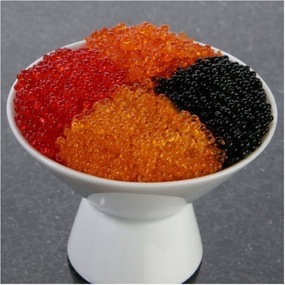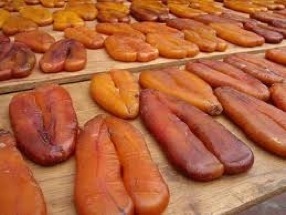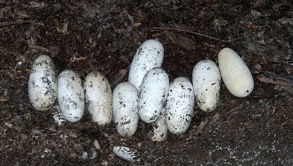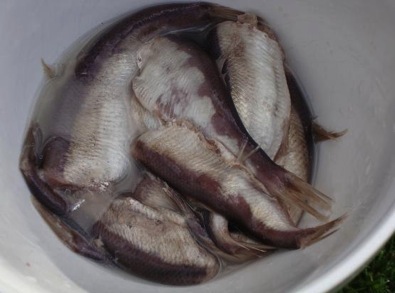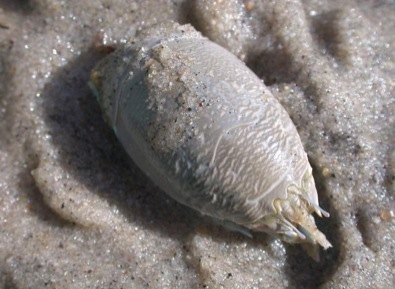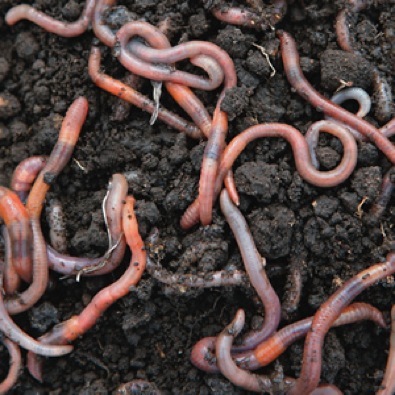
Earthworms, an important part of the native diet
Cooking with Earthworms
The cartoon strip BC once had its peg-leg poet write: “The bravest man I ever saw was the first one to eat an oyster raw.”
While that may be true, I can still remember the first time I saw anyone eat an earthworm. I told the story before in my article about checkerberries. I wrote: “He was a neighbor’s son named Gary Vickerson. I was about to start high school, around 1965, and Gary was less than half my age. He lived about a half mile to the northeast, over a small woody hill and across a short field. His mother knew my mother and there was a worn path between our houses. It was near a spot where checkerberries grew. I think his older brother Randy and sister Susan were there as well. We were looking for berries when Gary found an earthworm. Without announcement he just ate it, dirt and all, then laughed about it. No threats. No bribe. No “dare ya.” He just ate it. I can still remember the rich loam on his teeth. Oddly, he was the only one in that family of six who turned out all right.”
If you read any archaeological research on American naties you learn quite quickly that they dried and stored earthworms for winter use, some smoked them (though earthworms are not native to North America.) Usually the worms were either put in water so they would offload gut dirt or they were fed other stuff to get rid of the dirt and make them tastier. (They also dried or fermented fish eggs, but that’s another article.)
As it turns out Gary was lucky in that the worm he chomped down came from a healthy field. One can get some nasty diseases from eating earthworms raw. It’s not the earthworm per se but fetid stuff in the soil they live in, such as back yards that pets use for a bathroom. There is such a case in the medical literature from 2004.
A sixteen-year old girl took ill almost exactly a month after eating an earthworm on a dare, from a back yard. Doctors diagnosed her with a case of dog roundworm, something that is usually found only in toddlers, who routinely eat dirt. Usually asymptomatic, in this case it caused the girl breathing problems. Thus a word to the wise about collecting, handling and cooking earthworms. Backyard, playgrounds and public parks are not as clean as one might think.
Many of the same arguments that can be made about eating insects can be made about earthworms, except the arguments are even stronger (though personally I don’t view worms as food to save the planet, or insects. They are one more facet to add to a forager’s knowledge.)
In the earthworms’ favor — gastronomically speaking — is the fact nothing is thrown away. A 204 gram sample grams has 708 calories, are some 70% protein, 11% fat, up to 21% carbohydrates. Potassium is 1820 mg, phosphorus 1590 mg, calcium 444 mg, sodium 965 mg, chloride 910 mg, iron 50.4 mg, zinc 17.7 mg, copper 1.5 mg, iodine 0.38 mg, and selenium 0.40 mg. Additionally, eating them reduces cholesterol as their main oil is Omega 3 fatty acid, you know, the same stuff found in fatty fish. The earthy flavor of the worms blends well with certain dishes and spices… think cumin and curry. The positive list does not stop there.
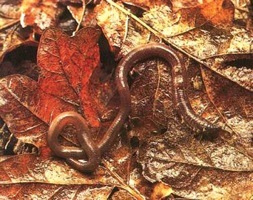 Earthworms are consumed in their entirety, no bones, viscera or waste involved. And there can be up to 1.75 million of them per acre. You may not know how to hunt, trap or fish, but you certainly know how to dig. And while they can be dug up easily in many places, it is also efficient to pick them up off the ground after a heavy rain. You can even be green about it and have an earthworm farm feeding them vegetable table scraps. That also makes it easy when you want some bait to go fishing, or getting a green date: “Would you like to come over and see my earthworm farm?”
Earthworms are consumed in their entirety, no bones, viscera or waste involved. And there can be up to 1.75 million of them per acre. You may not know how to hunt, trap or fish, but you certainly know how to dig. And while they can be dug up easily in many places, it is also efficient to pick them up off the ground after a heavy rain. You can even be green about it and have an earthworm farm feeding them vegetable table scraps. That also makes it easy when you want some bait to go fishing, or getting a green date: “Would you like to come over and see my earthworm farm?”
If you buy worms from other than bait shops they will come packed in peat moss. They also will have spend at least a day in shipping so they have also purged themselves. Thus they are ready for use after a little washing. If you go the bait store route and or raise your own you can do a couple of things to purge them. Put them in water for a few hours — they won’t die — or let them eat moist cornmeal for a day or more. Out with the old, in with the new.
Either way, earthworms should be kept cool, under 60F if possible, and moist. Prior to cooking examine a handful of worms. Get rid of any dead ones (make sure they are dead, though more specifically make sure they are alive.) Then rinse them in cold water. Pat dry. They are now ready for cooking or freezing for later use. A cup of worms weighs about 8 ounces, or two cups to a pound.
So, how to cook them? Usually the worms are boiled first before used any other way. This is a bit subjective but the point is to eliminate the mucus in them, much as one does with slugs and some snails (those crawlers are also fed for 10 days before use to assure they are non-toxic.) Some boil them once for ten minutes, some boil them five times in five changes of water for 10 minutes each. Some boil the three times for three minutes each. Others boil them twice for 15 minutes. Some don’t boil them at all. You have to find your own level of gastronomic satisfaction. Boil until they are mucus free, meaning the water remains clear. Once boiled they are ready for other uses. You can roast them, fry them, chop them, or dehydrate them. You can even grind the dry ones into a powder to be added to flour or the like. To dry put boiled earthworms on a baking sheet and cook at 325 F for 15 minutes. Others think just letting them eat other food for a day or two takes the place of boiling, as does one recipe below.
Beside Native Americans the Aboriginals in Australia ate earthworms as did the Maoris of New Zealand, and some people in China. The common earthworm’s scientific name is Lumbrius terrestris. (LEM-brick-es ter-REST-triss.) In this case the name means what we call it. Lumbrius means worm and terrestris means earth.
Lastly, before we get to the recipes, a word about table presentation. When we eat beef, the entire carcass is not placed on the table before us. We often go to great lengths to make this or that cut appetizing, edible, and attractive yet we tend to think of worms (and insects) in toto rather than in recipes, invoking the Yuck Factor. Most of us ate pork, beef or lamb for years before seeing one roasted whole on a spit, which if that had been our first experience with that meat we might have thought of it as yucky, too. Start exotic fare as part of a recipe first, then work your way up.
One more little fact: The experts tell us earthworms are not native to North America. They came with the Europeans thus Native American uses would be latter day rather than pre-Columbian.
EARTHWORM SAUTE by Christopher Nyerges, Urban Wilderness: A Guidebook to Resourceful City Living, 1979
1 cup earthworms
1/2 large onion, chopped
1/2 cup water
1 bouillon cube
1 cup yogurt or sour cream
3 tablespoons butter
1/2 cup mushrooms
Flour for coating
Wash earthworms thoroughly and place in boiling water for three minutes. Pour off water and repeat the boiling process twice. Bake on cookie sheet at 350 degrees F. for 15 minutes. Roll the worms in flour, brown in butter, add salt to taste. Add bouillon and simmer for 30 minutes. Saute onions and mushrooms in butter. Add onions and mushrooms to the worms. Stir in sour cream or yogurt. Serve over rice or noodles.
DEEP FRIED EARTHWORMS
Chop a sweet apple fine then put in with worms for a day. Chill worms. Roll in flour with paprika, salt and pepper. Deep fry until crisp.
ASIAN EARTHWORMS
After soaking worms, steam them with onions, garlic, broccoli. Pour over them a sauce of butter and soy sauce. Noodles or rice is optional.
EARTHWORM PATTIES (By Matthew Stewart, The Incredible Edible Wild)
1 1/2 lbs. ground earthworms (Place live worms in damp cornmeal for 24 hours to purify, boil for 10 minutes, then grind. Yes, they are used wet)
1/2 cup butter, melted
1 teaspoon lemon rind, grated
11/2 teaspoons salt
1/2 teaspoon white pepper
1 egg, beaten
1 cup dry bread crumbs
2 tablespoons butter
1 cup sour cream
Combine earthworms, melted butter, lemon rind, salt, and pepper. Stir in soda water. Shape into patties and dip in beaten egg, then in bread crumbs. Place in heated butter and cook for 10 minutes, turning once. Place patties on hot serving dish. Serve with heated sour cream on top.
EARTHWORM MEATLOAF, from the Worm Book by Nancarrow and Taylor, 1998.
1 1/2 pounds ground meat
1/2 cup boiled worms, chopped finely
1 onion soup mix
1/2 cup evaporated milk
1/2 bell pepper, chopped
1 slice fresh bread, shredded
Mix all ingredients together and place in a loaf pan. Bake for 1 hour at 400°F.
CARAMEL WORM BROWNIES
1 pack of Brownie mix (or your own homemade recipe)
2 Tbsp worm flour
1 cup chopped nuts
1/4 cup bottled caramel sauce
Combine the brownie mix with the worm flour and prepare according to package directions. Stir in the nuts.
Pour 1/2 to 2/3 of the batter into a baking dish. Drizzle the caramel sauce on top of the batter. Pour the
remaining batter on top of the caramel sauce. Bake according to package directions.
And lastly, a first-prize willing recipe created in 1976 by Patricia Howell of West St. Paul, Minnesota. She entered the earthworm annual recipe contest sponsored by the North American Bait Farms.
EARTHWORM APPLESAUCE SURPRISE CAKE
Mix together the fllowing: 1/2 butter, 1 1/2 cups sugar, 3 eggs (well beaten) 2 cups of sifted flour, 1 tsp backng soda, 1 tsp cinnamon, 1/2 tsp each of salt, nutmeg, ground cloves; 1 1/2 cups applesauce, 1 cup of earthworms dried and 1/2 cup cup chopped nuts. Pour mixture into a greased baking pan and bake fo 50 minutes at 350F. remove, cool and serve.

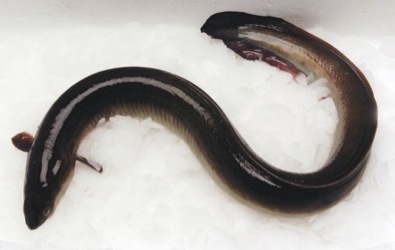
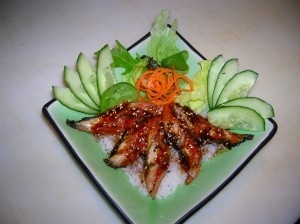 In a word, eels are fish,usually brown, green, olive or black, with a light or yellow stomach. There are five species in cooler waters, ten in warm waters, one in Europe. While they live in fresh water, on shallow bottoms, after a set number of years (8 for males, 13 for females, 25 if landlocked) their yellow belly turns silver and they swim to the deep Sargasso Sea between Bermuda and Puerto Rico. There they spawn and each female eel can produce as many as 10 million baby eels. The resulting little eels drift for a year upon the currents then select a fresh water area to live, from eastern North America to the rivers of western Europe. Thus my first eel had traveled several thousand miles. They’ve also been eaten around the world in nearly every country.
In a word, eels are fish,usually brown, green, olive or black, with a light or yellow stomach. There are five species in cooler waters, ten in warm waters, one in Europe. While they live in fresh water, on shallow bottoms, after a set number of years (8 for males, 13 for females, 25 if landlocked) their yellow belly turns silver and they swim to the deep Sargasso Sea between Bermuda and Puerto Rico. There they spawn and each female eel can produce as many as 10 million baby eels. The resulting little eels drift for a year upon the currents then select a fresh water area to live, from eastern North America to the rivers of western Europe. Thus my first eel had traveled several thousand miles. They’ve also been eaten around the world in nearly every country.
